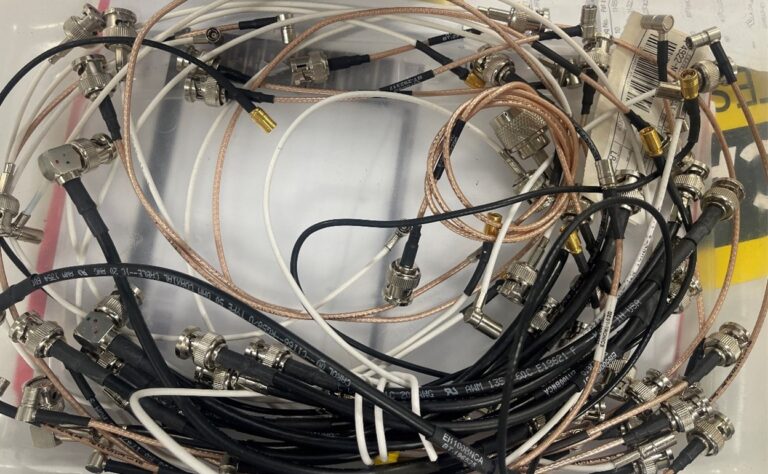Category Archive: Uncategorized
Keeping a neat test bench…
Kicking off my Career at E&I
What is it like working as college student with no real professional experience?
To be honest, it can be quite intimidating. At times, I even experienced imposter syndrome, which led me to believe that I was not fully qualified or as competent as I should be. However, I could not have asked for a better opportunity, as E&I quickly helped me realize that I was much more capable and skilled than I thought. My name is Anthony Lippa. I am a senior at RIT studying Electrical Engineering Technology. In May of 2022, I had the wonderful opportunity to join E&I as an electrical engineering co-op. Since then, I have learned many valuable lessons and have been able to experience all sorts of highs and lows that only served to advance my career. In this post, I would like to share why starting my engineering career at E&I was an amazing decision.
With a tightknit team of ten people, it goes without saying that E&I is a smaller company. However, I soon realized that being a part of a smaller company brought forth many benefits for a budding engineer. It was easy to form new relationships within the workplace and I quickly felt comfortable asking questions and striking up conversation with everyone. I was fortunate enough to receive one-on-one training and mentoring from several experienced coworkers, who all genuinely wanted me to succeed at what I did. They all took their time and made sure I completely understood the lesson or assignment before moving onto the next topic, which is something I never took for granted. Additionally, compared to a large company, working at a smaller company led to so many more opportunities and learning moments. I was able to work on a wide variety of assignments such as assembling the amplifiers and their components, RF testing the units, and designing new solutions for customers. Gaining experience in these different areas revealed that each one played a crucial role in the success of the company. I was thankful for the constant opportunities to try new things, as I may have been stuck doing one task or project for months at a larger company.
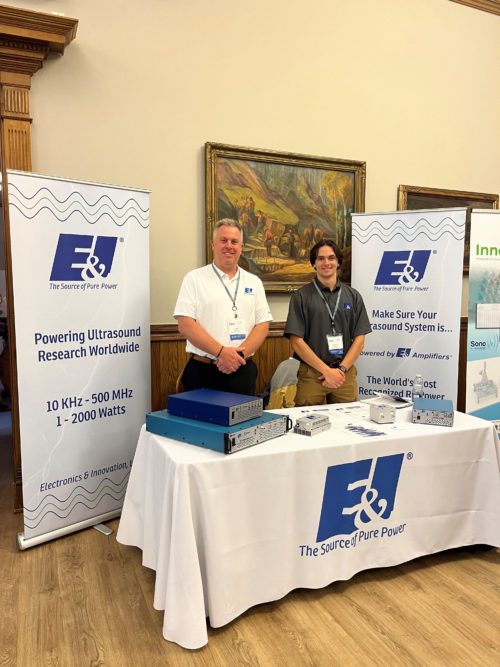
Jeff and Anthony representing E&I at the Annual ISTU Conference in Toronto, CA
On the topic of trying new things, E&I also allowed me to attend several trade shows and conferences to learn more about how their amplifiers were being used in the medical industry. We traveled across the nation to events such as the International Symposium of Therapeutic Ultrasound (ISTU) in Canada and the International Symposium of Biomolecular Ultrasound and Sonogenetics (ISBUS) in California. These gatherings were the perfect opportunity to learn more about the field of therapeutic ultrasound and how our products were being applied. E&I’s RF power amplifiers serve to drive ultrasound transducers, which deliver high-frequency waves that are used in a wide variety of applications. If you are not familiar with the science and applications of therapeutic ultrasound, I highly recommend looking into it, as a large majority of the projects and research being done is stuff pulled right out of science fiction! In addition to having my mind blown from all the current medical advancements, I was also able to meet and chat with people from all over the world. They were so passionate about their research and it was refreshing to learn not just about electronics, but medical topics as well.
After seeing the impact that our amplifiers have in the world of ultrasound therapy, my work seemed to hold even greater weight than before and I took every opportunity to learn more while on the job. However, learning came with obstacles (many of them). Projects that posed the most difficulty were those where there was no definitive answer. For example, while troubleshooting malfunctioning units, there was never just an “easy fix”, but rather a whole bunch of possible causes for the problem. Like with any new skill, there were several difficulties in the learning process from overlooking small details to making the problem even worse! However, practice makes perfect, and with enough experience, I formulated a process to analyze the situation and confidently make changes until the issue was resolved. My philosophy is that the best way to learn is to learn what not to do. Rather than looking for the ideal outcome, I prefer to know what might happen if mistakes are made. This approach allowed me to learn very quickly from my mistakes and reduce error. Surprisingly, jumping directly from schoolwork to actual engineering work was not all that different. Having to juggle multiple projects and deadlines gave me plenty of real-world experience that I was missing from college. It was this experience that I needed to prove to myself that I was fully qualified.
During my eight months with E&I, I learned more about the world of electrical engineering than I ever had before. Not only that, but I was exposed to all aspects of a company, ranging from proper meeting etiquette to how international sales work. Undoubtedly, these countless experiences in such a short period of time served to kickstart my career as a new engineer. Ordering electronic parts, documenting changes in procedures, electrical troubleshooting, modifying and revising a circuit… these were all real industry experiences and I was more than capable of accomplishing all of them! It turns out all my hard work and dedication paid off, as I was offered a full-time Design/Application Engineering position for when I graduate! (I obviously accepted.) I could not have asked for a better first engineering experience, as it showed that I had no reason to doubt my ability and gave me a glimpse into my own future as I travel down the long and winding road to become an electrical engineer.
Anthony Lippa
1/30/2023
Press Release
E&I is pleased to announce the appointment of Jeff Keller to the position of President.
Jeff joined E&I in 2014 as North American Sales Manager, he was promoted to Vice President of Sales in 2016. Jeff has continued to take on more leadership roles within the company, working with the board to define the strategic direction of the company and has been key in E&I’s continued growth and success.
Tony Harris will remain as Chairman of the Board and work with the board and Jeff on growth plans but will relinquish day to day activities.
Introducing the E&I UltraX -Series!
Engineered with a vision for the future. The UltraX series is designed to provide a simple, compact, low heat dissipation and robust solution for the growing Neuromodulation Applications
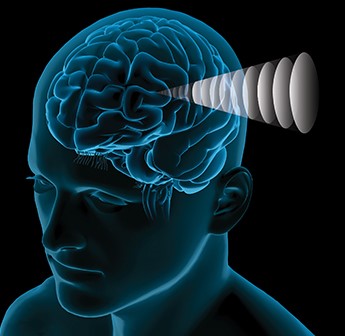
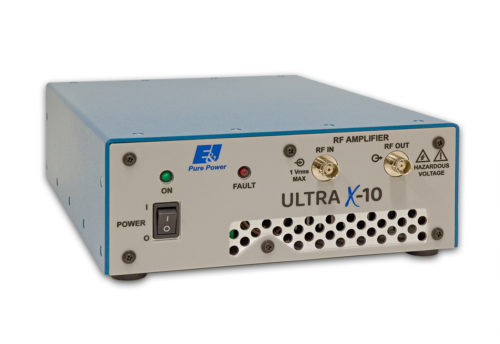
Request for Quote
"*" indicates required fields
E&I Interview with Focused Ultrasound
https://www.fusfoundation.org/news/company-profile-e-i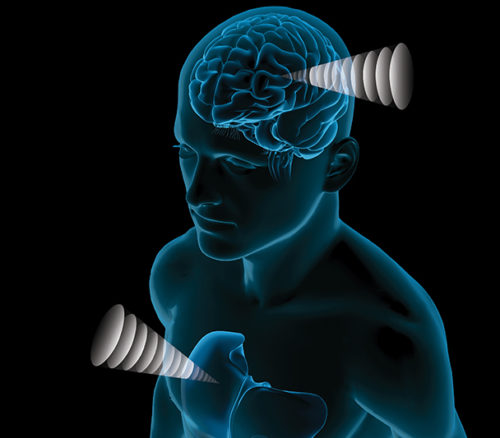
WPTC in London
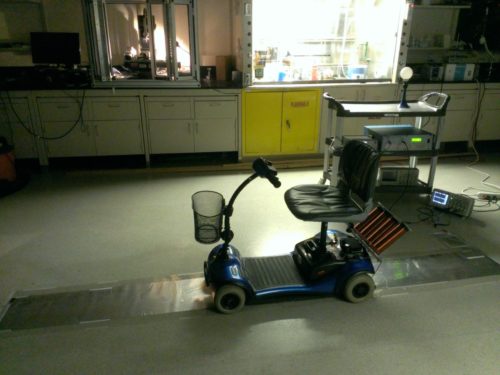
E&I had an excellent time at the WPTC in London! Very exciting progress being made in wireless power transfer. Notice the nice blue amp in the pic?
Posted by: Jeff Keller, July 2, 2019
E&I Exhibiting at ISTU-EUFUS Symposium
E&I is excited to be exhibiting next week in Spain for the ISTU- EUFUS Symposium. Please stop by booth # 15 to find out what’s new!

E&I Exhibited at the IEEE IUS Conference
E&I exhibited at the IEEE IUS conference again this year. The conference was held in Kobe, Japan and there were approximately 1,400 attendees many of whom stopped by our booth to see our new S-Series product and to discuss their applications. It is always great to meet with potential new customers and visit with our current customers. We are looking forward to exhibiting at the conference next year which will be held in Glasgow, Scotland.
As always, E&I can help with all your RF power needs, especially with regards to ultrasound!

The Mad Scientist
We often hear tales of the experiments that are conducted by scientists. Behind closed doors, in their laboratories in the depth of night. Bunsen burners heating flasks of overflowing foam as test tubes containing varying concoctions are added. A Van De Graff generator in the background is driving the voltage of a couple of parallel plates to breakdown and sparks fly across them sizzling and piercing the silence. The crazy scientist wearing a well-worn and chemical-stained lab coat looks on with wild scary glazed eyes. Rapidly recording notes into an overstuffed lab book, their hair all standing on end, with a smile reminiscent of Mona Lisa.
However, if you meet Jessica Foley, the Chief Scientific Officer at the Focused Ultrasound Foundation, you will find, on first impression at least, that she does not live up to the caricature at all. She is very engaging and she and her colleagues were very generous with their time as we discussed E&I and where our amplifiers fit into the FUS environment.
Then just as we were about to leave, she said “I must tell you of an experiment that I did with one of your amplifiers, whilst I was at the University of Washington.” (Oh yeah; here we go I thought.) “Late one afternoon” she said “myself and some other researchers locked the door of the lab and using one of your high power amplifiers decided to try some acoustic cooking. We immersed salmon, vegetables and steak into water and then applied several hundred watts of RF power to the transducers and cooked all the food with ultrasonic energy.” She went on to tell us that it all tasted wonderful, though she herself avoided the steak that was well done in the middle and rare on the outside!
So it is true that you never know what crazy scientists will cook up!
Cheers,
Written by Tony Harris, October 5, 2017
Car Sound Systems
Written by Tony Harris, September 22, 2017
Don’t you think the quality of car sound systems today is quite phenomenal? They are very compact units and capable of high volume and low distortion. How do they do it? You’d think you’d have to lug a trailer on the back full of amplifiers to get that type of sound quality.
The fundamental components that are doing the work in today’s amplifiers are transistors. The transistor gets its name from the combination of ‘resistor’ and ‘trans’. Basically it is just a resistor that we can vary. We can vary it from a short circuit to an open circuit. If you recall from some science or physics class years ago, you will know that the loss in a resistor is I2R: where I is the current in Amps and R is the resistance in Ohms. So if the resistance is 0 then the loss is the current squared times zero, so it’s zero loss. Now if the resistance is open (infinite) then no current can flow so again the loss is zero. So if we use a transistor in only two states; open or short, there is no loss and therefore, very efficient.
Car sound systems use a type of sampling technique, whereby they sample the input signal and effectively digitize it. Then they amplify it, but because they are now amplifying a digital signal it is either full on or full off – very efficient. After it is amplified they use a filter to reconstruct the analogue signal. The end result is it sounds great, but is very efficient so doesn’t dissipate a lot of heat and can be very small.
So why don’t we use this technique for high frequency amplifiers for ultrasonic and communication applications? The difficulty with this technique is that you have to switch the amplifier much faster than the frequency of the signal that you are amplifying. For audio signals this is not a problem but as we move into the high KHz and MHz region this pushes the state of the art of the capability of the transistors.
However, here at E&I using fast devices and interleaving techniques, we are pushing the frequencies higher and higher. We have our 1000S04 which is capable of 1000 watts of instantaneous power from 10 KHz up to 400 KHz. We also have 500S06 which is capable of 500 Watts 20 KHz to 600 KHz.
Before the end of June we will be at 1 MHz and then go beyond.
E&I is the leader in this technology, which will become the standard for ultrasound systems.




